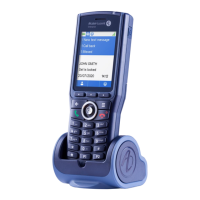7.6 Power mode 60
7.7 Change PIN code 60
8 Using the telephone in E-GAP or GAP mode 61
8.1 Phone description 61
8.2 Display icons 63
8.2.1 Status icons 63
8.2.2 MENU icons 64
8.2.3 Call icons 65
8.3 Accessing the MENU and navigating 65
8.4 Making a call 66
8.5 Receiving a call 66
8.6 Calling from your personal directory 66
8.7 Calling your caller by name (company directory) 66
8.8 Calling using speed dial key 67
8.9 Redialing the last number dialed (redial) 67
8.10 Call log 67
8.10.1 Manage the call log 67
8.11 Sending DTMF signals 68
8.12 Sending a calibrated cut-off 68
8.13 Programming your personal directory 68
8.13.1 Add new contact 68
8.13.2 Modify a contact 69
8.13.3 Deleting a contact 70
8.14 Speed dial management 70
8.14.1 Add a contact to a speed-dial key 70
8.14.2 Delete programmed speed dial keys 70
8.15 Make a second call 71
8.16 Switching between calls (Broker call) 71
8.17 Transfer a call 71
8.18 Receiving a second call 72
8.19 Sending DTMF signals 72
8.20 Read new text messages 72
8.21 Send new text messages 72
8.22 Send predefined text messages 73
8.23 Listen to new voice messages 73
8.24 Immediate forward to a number 73
8.25 Diverting calls to your voice message service 74
8.26 Deactivate forward 74
8.27 Customizing and adjusting your telephone 74
8.27.1 Choosing your melody 74
8.27.2 Adjusting the ringer volume 74
8.27.3 Selecting language 75
8.27.4 Other features 75
8.28 Configure the P1, P2 keys 77
8.28.1 Define the feature to associate with the P1/P2 key 77
8.28.2 Define speed dial P1/P2 keys (long and short press) 77
8.29 Calendar 78
8.29.1 Modify the agenda format 78
8.29.2 Programming an appointment reminder 78
8.29.3 View the details of an appointment 78
8.29.4 Modify an appointment reminder 79
8.29.5 Copying an appointment reminder 79
8.29.6 Delete an appointment reminder 80
8.30 Locking your terminal (Key lock) 81

